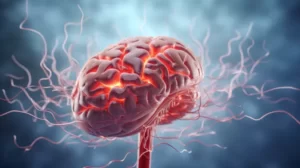A stroke can have life-changing effects on your health, but making one crucial lifestyle change can lead to increased life expectancy, improved brain function, and better heart health. Researchers at the Toronto Rehabilitation Institute have discovered that engaging in regular exercise after a stroke can lead to a 50% improvement in memory, language, thinking, and judgment issues. This finding gives hope to stroke patients looking for ways to regain their independence and improve overall quality of life.
The Power of Exercise After a Stroke
According to the study, stroke patients who exercised regularly reduced the occurrence of at least mild cognitive impairment from 66% to 37%. The research involved 41 patients, 70% of whom had mild to moderate walking difficulties that required assistance from a cane or walker. They followed an adapted aerobic and strength/resistance training program, exercising five days a week.
The exercise routine was designed to mimic daily life activities and included walking, lifting weights, and performing squats. This approach made it easy for patients to relate to the activities and encouraged them to continue exercising outside of the study.
Lead researcher Susan Marzolini pointed out that people who suffer cognitive deficits after a stroke face a threefold risk of mortality and are more likely to be institutionalized. Her take on the findings: “If we can improve cognition through exercise, which also has many physical benefits, then this should become a standard of care for people following stroke.”
A Well-Rounded Approach to Recovery
While exercise is a critical component for stroke patients’ recovery, it’s also important to consider other factors that contribute to a well-rounded rehabilitation program. These include proper nutrition, emotional support, and learning adaptive techniques for performing everyday tasks.
Proper Nutrition: Ensuring that stroke patients receive adequate nutrition is essential for their rehabilitation. According to the American Heart Association, a diet rich in fruits, vegetables, whole grains, lean proteins, and low-fat dairy products can help control blood pressure, cholesterol, and overall cardiovascular health. Incorporating these food choices into their daily routine can give stroke patients the fuel they need to engage in exercise and other rehabilitation activities.
Emotional Support: Recovering from a stroke can be an emotional rollercoaster. Stroke survivors may experience feelings of depression, frustration, anger, and isolation. It’s crucial to have ongoing emotional support from a network of friends, family, and healthcare professionals. Support groups for stroke survivors, like those offered by the American Stroke Association, can also provide valuable resources and connections with others facing similar challenges.
Adaptive Techniques: Learning new ways to navigate daily life is another important aspect of rehabilitation. Occupational and physical therapists can help stroke patients develop adaptive techniques to perform everyday tasks, such as dressing, grooming, and preparing meals. Mastering these skills can lead to increased independence and the confidence to tackle more exercise and rehabilitation activities.
Making Exercise a Priority
Here are some practical tips for stroke patients looking to reap the benefits of an active lifestyle:
Start Slow: It’s essential to begin exercising at an intensity level that’s appropriate for each individual’s abilities. Over time, exercises can become more challenging as the person regains strength and endurance.
Consult a Professional: Work with a healthcare professional or physical therapist to develop a safe and effective exercise plan that meets the unique needs of each stroke patient.
Find Enjoyable Activities: Adopting an exercise routine is much easier when you enjoy the activities involved. Walking, swimming, and dancing are just a few examples of fun exercises that can provide physical and mental benefits.
Build a Support System: Having a workout buddy or group to exercise with can make the process more enjoyable and provide added motivation to stick with the exercise program.
Track Progress: Keep a record of your workouts and any improvements you notice. Monitoring progress can help to maintain motivation and serve as a reminder of just how far you’ve come in your recovery.
In conclusion, incorporating exercise into a stroke patient’s rehabilitation program can lead to significant improvements in cognition, independence, and overall quality of life. By making exercise a priority and following a well-rounded approach to recovery, stroke survivors can increase their life expectancy and enjoy many physical and mental health benefits.



